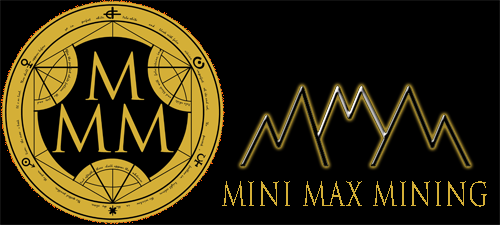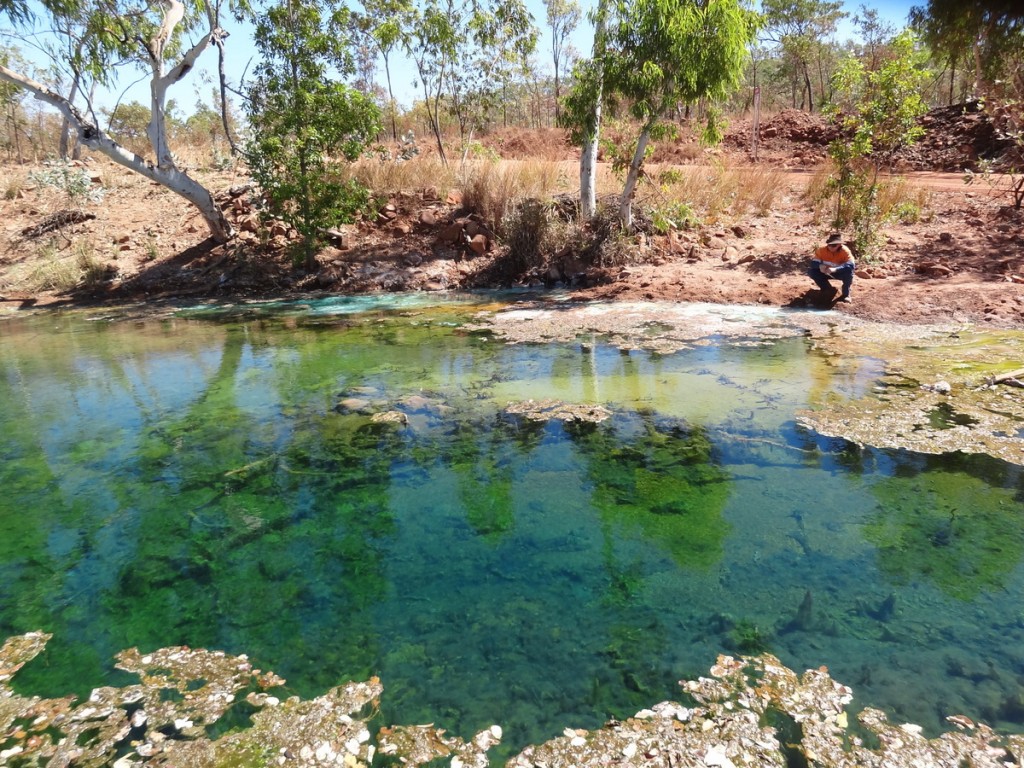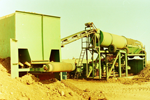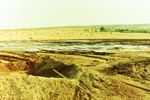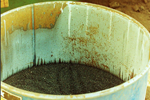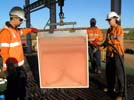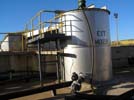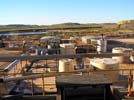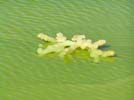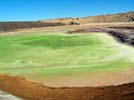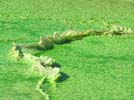Contaminated Site Projects
Introduction
Work in contaminated site remediation and rehabilitation has resulted from our major focus on productive mining on a small scale.
We have developed a small scale mining model to fill a need to develop the large number of small resources that are found and proven by our explorers but will never be developed due to their size.
Current projects
Mini Max Mining is consulting to a mining company with a highly contaminated mine site in the Northern territory. Annual uncontrolled discharge of wet season flows from the mine tenements are resulting in measured contamination of downstream waterways.
Our objective is to remediate the water contamination in a manner that is cost neutral by recovering valuable metals from the discharge stream and delivering them in a saleable form. This required development of a process to clean the water so that the operating cost is met from metal sales. Equipment is currently under construction and will be developed with the potential for application to other similar contaminated sites at the conclusion of this programme.
Project list of contaminated site projects
SA Housing trust -1992
We were contracted to Kinhill Engineers of Adelaide to clean lead contamination from a site of a planned SA Housing Trust development. The site was a closed skeet shooting range.
We built, and operated a processing plant to clean 18,000 tons of contaminated topsoil and return it to the site for safe housing development. The process recovered 21 tons of lead metal and associated PCB’s from the site.
The process plant was adapted from a gold recovery plant recently de-commissioned from a role as a pilot plant.
Adelaide City council- 1999-2000
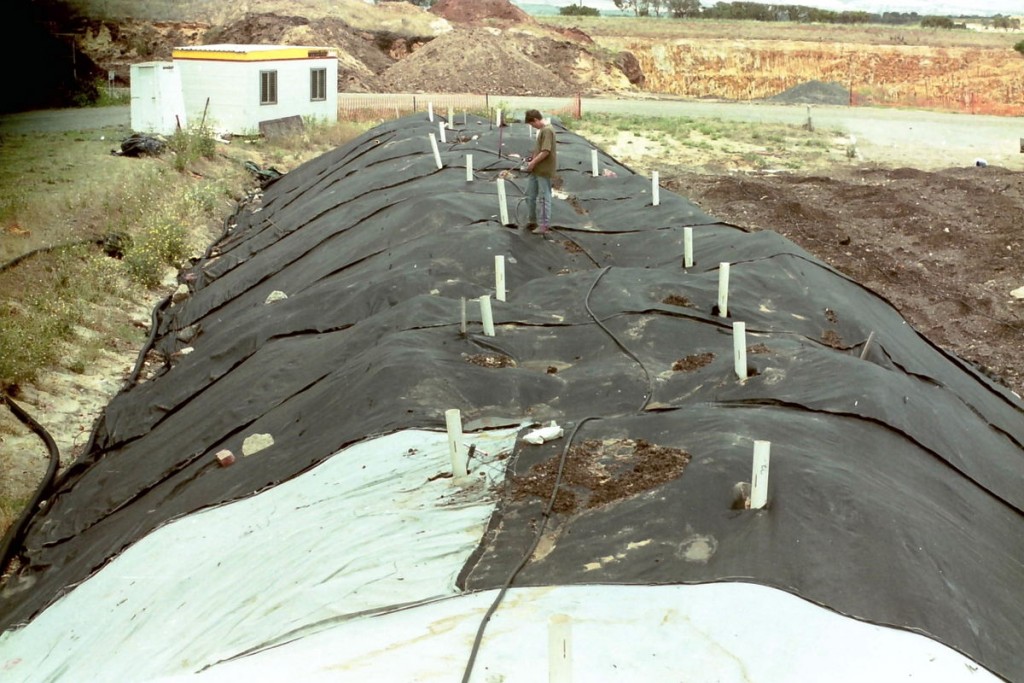
We were contracted to Thiess Environmental services to process 15,000 tons of carcinogenic PAH material. The PAH material was the product of a government “gas from coal” plant established in the late 19th century with the residues being buried at the site. This material was encountered during excavation for the high rise housing development at the site.
The process required construction of an aerated bio-pile to accommodate a symbiotically acclimated group of bacteria to convert the hydrocarbons to acceptable standards.
The alternative to processing this material in Adelaide and getting it to a low level standard was to transport the material to the high level waste repository in Victoria. The estimated to cost for specialised transport was $4 million. The bio-pile alternative cost approximately $400,000.
Kanmantoo Copper mine (near Adelaide)- 2006-2009
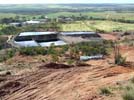
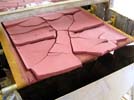
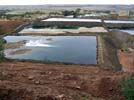
The Kanmantoo copper deposit had a major mine development in the 1960’s. The site was in a poorly remediated state resulting from the operating company collapse due to low metal prices. A 500,000 ton stockpile of oxide ore remained at the site and was causing copper contamination to the local farm land from wind erosion of the stockpile material. The base of the pit was below the water table and contained AMD with a significant copper load in solution. The 1960’s rehabilitation programme had directed all site storm water into the pit in a flawed attempt to contain contamination from the mine site. The reality is that the AMD was becoming an increasing plume in the water table with each inflow of storm water.
We gained approval to establish a process plant to extract the copper from the oxide stockpile and to store the tailings from the process in a lined cell. A secondary approval was to allow the use of the pit water to utilise the acid in the water and to extract the copper that had built to significant levels.
An advantage of using the pit water for processing allowed us to measure and demonstrate the steady reduction of the contaminated plume in the water table.
This project was economically profitable and demonstrates the important consideration of rehabilitation focused on profitable operation rather than being a drain on capital. This project was considered sub-economic by general mining standards resulting in a drawn out approval process.
The project was subsequently sold into the Hillgrove resources listing and is currently a large scale operating mine.
Whim Creek copper mine in W.A. 2009- present
We designed and built a 5 ton per day Solvent extraction and Electro win (SXEW) at the Whim Creek mine site after the 20,000 ton per year SXEW plant had been closed and removed. The oxide ore heap leach operation had become sub economic after the daily cathode production fell below a threshold level.
The total resource mined and leached was 6 million tons with 6,000 tons of copper remaining in the heaps, based on the original test work recovery figures. The closed operation was sold after the process plant had been previously sold and removed.
The site had a rehabilitation liability from the operation and we established a scavenge leach process followed by copper cathode production so that the rehabilitation costs could be met from the profits of this operation.
This project is currently ongoing and achieving the design production target.
DMITRE (Mines department, SA) – 2012 to present
We are consulting to a private group who are attempting to rehabilitate a 6.5 million ton tailings dam at the Mt. Gunson copper mine in S.A. The tailings are not contained and are being washed into a pristine salt lake.
We have presented a rehabilitation programme to achieve a positive cash flow from the recovery of remnant minerals during the re-mining of the tailings and transporting them to an alternative storage. This planning is on-going.
Horseshoe Copper Mine, W.A. – 2014
We are consulting to this company to remediate the copper mine site in central Western Australia.
The stage one objective is to remediate the site for areas contaminated by past mining and to establish a 15 ton per day copper recovery plant to achieve the remediation target. This will result in a positive cash flow from activities allowing the company to continue exploration activities.
A stage two objective is to reprocess all tailings as part of a staged rehabilitation and repositioning the tailings in a lined cell to bring the site to an acceptable compliance status. This will produce a positive cash flow from the process.
Copper Mine NT – 2013- present
We are consulting to company to remediate the copper mine site in a staged manner that considers the stakeholders requirements.
A programme proposed for 2014 is to remediate the pit water contamination into the environment.
A programme proposed for 2015 is maintaining the remediation programme and to begin a rehabilitation of the processing site and tailings and stockpiles. The process site is the source of the contamination and must be rehabilitated to stop continued contamination.
The 2015 programme requires approval to establish a new process site that will be able to process the proven ore resource beyond the rehabilitation of the process site.
